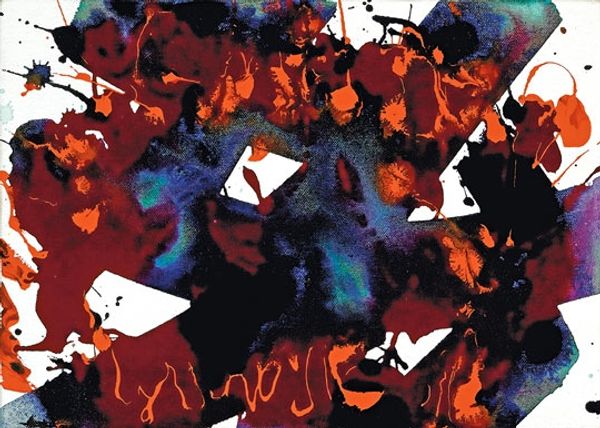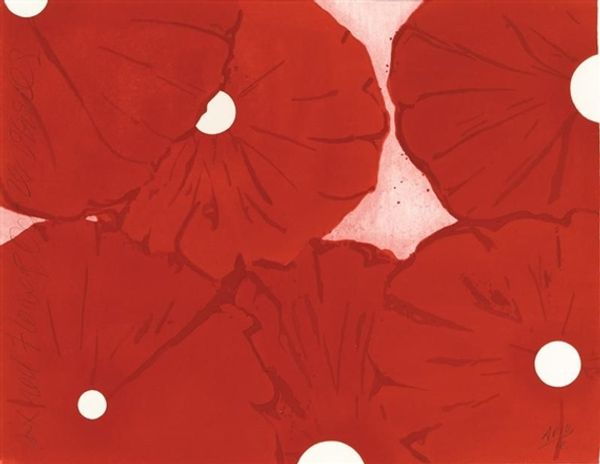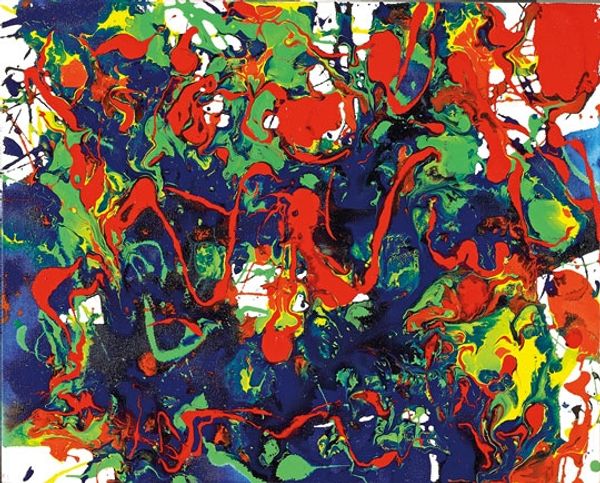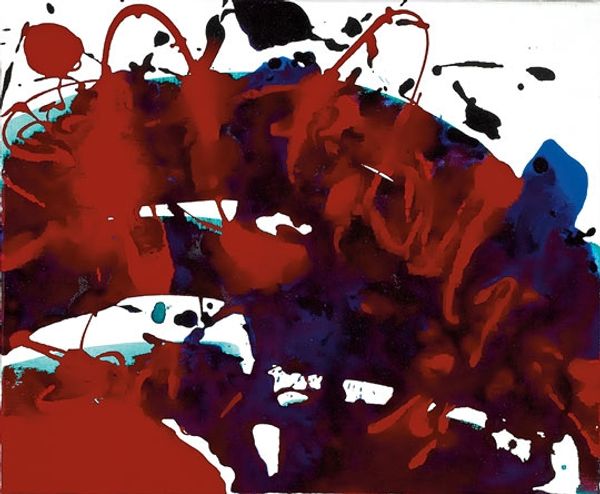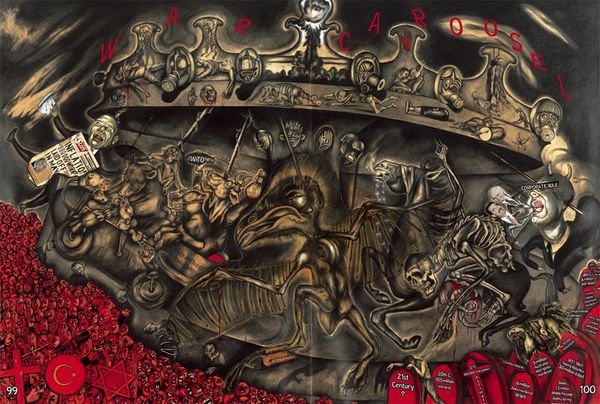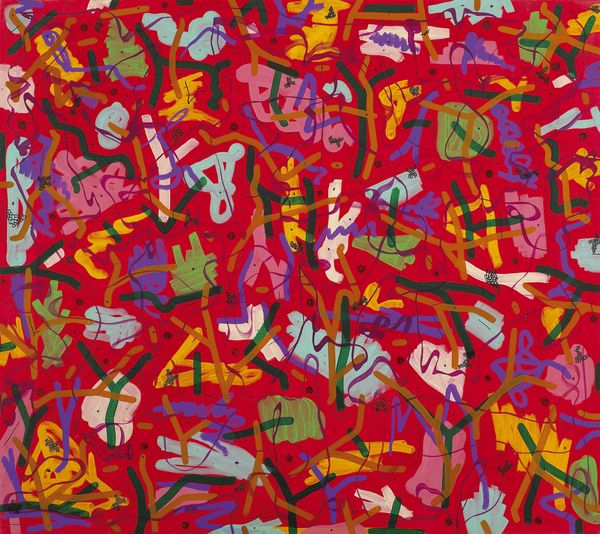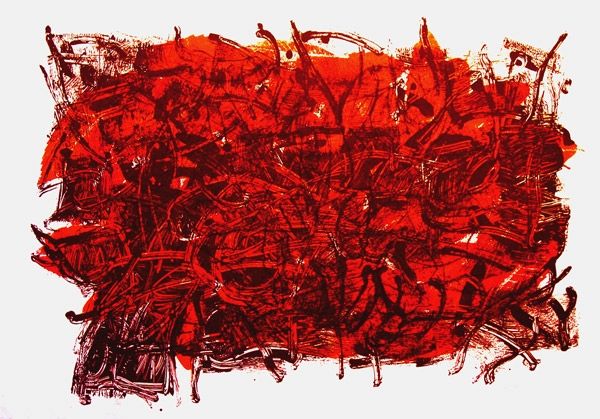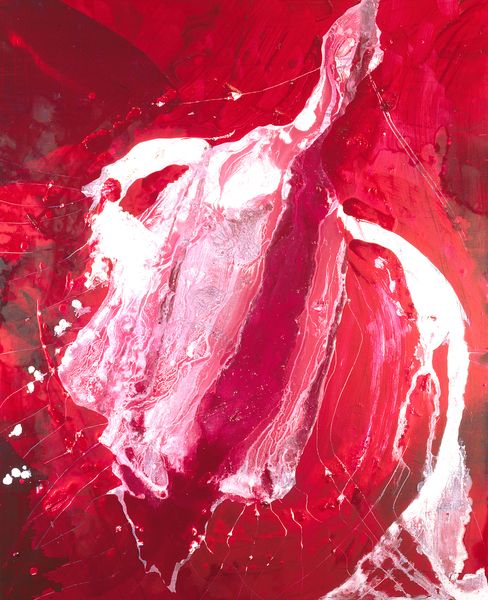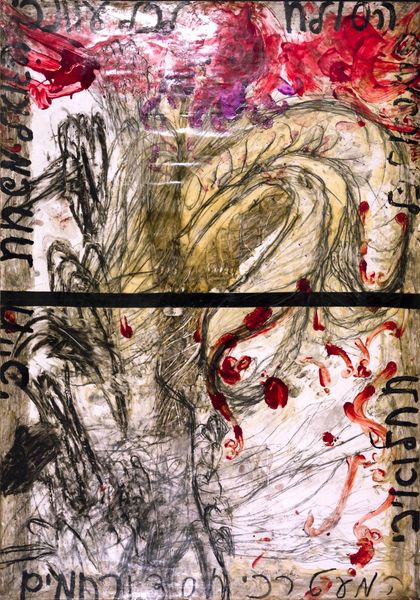
Copyright: Nalini Malani,Fair Use
Editor: This is "In Search of Vanished Blood" by Nalini Malani, made in 2012. It's a mixed-media drawing, primarily in red ink. The figures and phrases swirling across the surface give me a feeling of intense unease, a sort of primal scream captured visually. How do you interpret this work? Curator: That visceral reaction is precisely where Malani intends us to begin. The colour red itself is laden with significance, immediately evoking blood, passion, and violence. Consider its use throughout history: in religious iconography representing sacrifice, in political symbolism signifying revolution. What feelings does the particular shade of red evoke for you? Is it a vibrant, life-affirming red or something more subdued, perhaps hinting at dried blood, at a loss? Editor: I think it feels closer to dried blood, definitely hinting at a loss. Curator: Exactly. Now, look at the figures. Are they fully formed or fragmented? The artist scatters elements in the space around her figures and uses written fragments, forcing viewers to piece together a story, or rather, a constellation of ideas, based on the cultural meanings assigned to such representations and signifiers. Can you find a link to contemporary cultural, societal and political events that mirror this feeling? Editor: I see that now. There are fractured figures and written fragments like "No One Had The Time to Listen." It speaks to the voiceless and ignored victims, like the wounded and forgotten in political conflicts and wars, or something of that nature... The fragmented nature really drives home that feeling. Curator: Precisely. And what about the number 45? Could that point to some kind of historical continuity or is it just arbitrary? Editor: I hadn’t noticed that, but now that you mention it...it certainly makes me curious about it's potential symbolism. So, the artwork carries these layers of meaning related to historical memory and cultural experiences. Curator: Precisely. It is a work intended to remind us, perhaps warn us, to look closer, listen harder, and remember what has been lost so as not to repeat history.
Comments
No comments
Be the first to comment and join the conversation on the ultimate creative platform.

